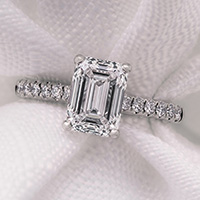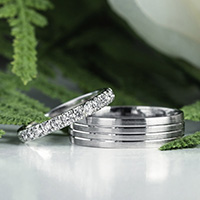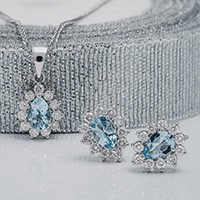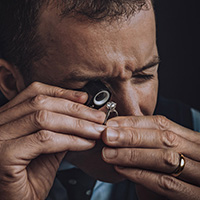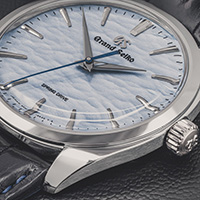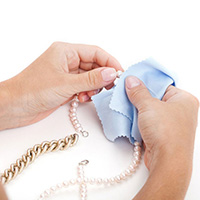- Home/
- Watch Movements | Quartz, Automatic, Mechanical | James Porter & Son
Watch Movements Guide
In this guide
What Are Watch Movements?
A watch movement is arguably the most important collection of components in a wrist watch because the movement is what makes a watch… a watch. Think of it like an engine to a car; without it, the car won’t move. Like different types of car engines, there are several numerous types of watch movement that can broadly be categorised into ‘mechanical’ and ‘quartz’ movements.
Mechanical watches include automatic and hand-wound movements and quartz watches include battery, solar and kinetic powered movements.
Mechanical watches have been the foundation for all contemporary watches we know today. So, to understand the subtle differences between watch movements, it’s useful first to understand how a mechanical watch actually works.
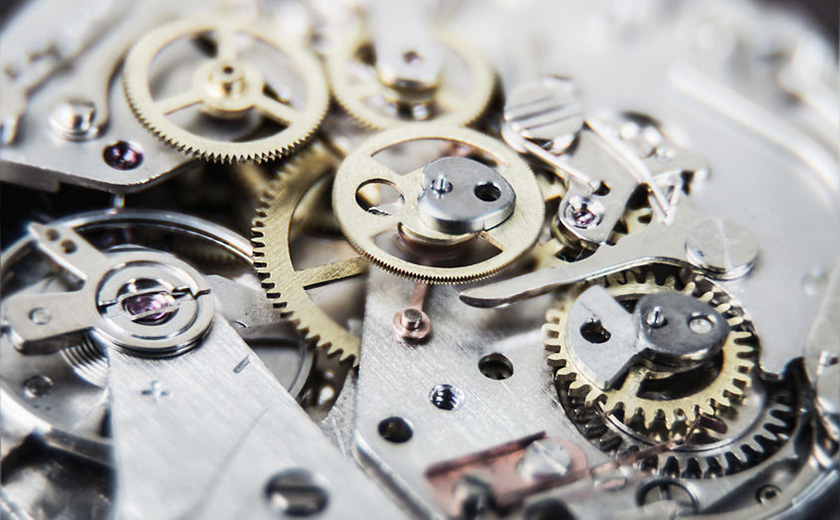
How a Manual Mechanical Watch Works
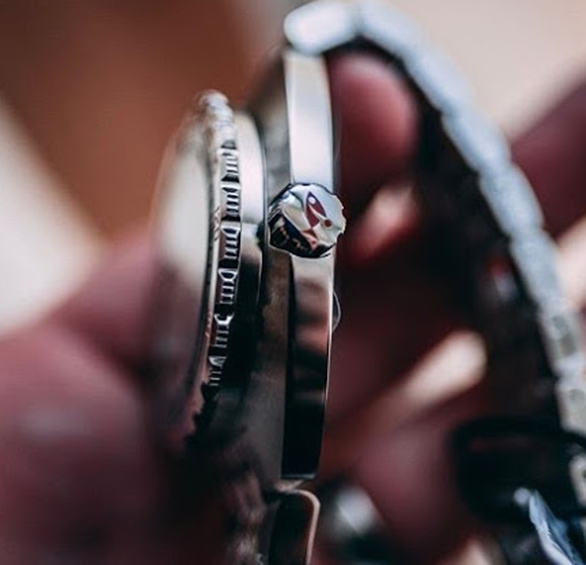
Crown
What is the crown?
The only element normally accessible to the wearer, the crown is the small wheel on the side of a watch which is used to wind a manual watch’s mainspring and set the time and date.
What does a watch crown do?
With a manual watch, the crown is attached to the mainspring via a slim metal stem, and is wound by the wearer every day to wind the mainspring, producing the kinetic energy needed to power the watch.
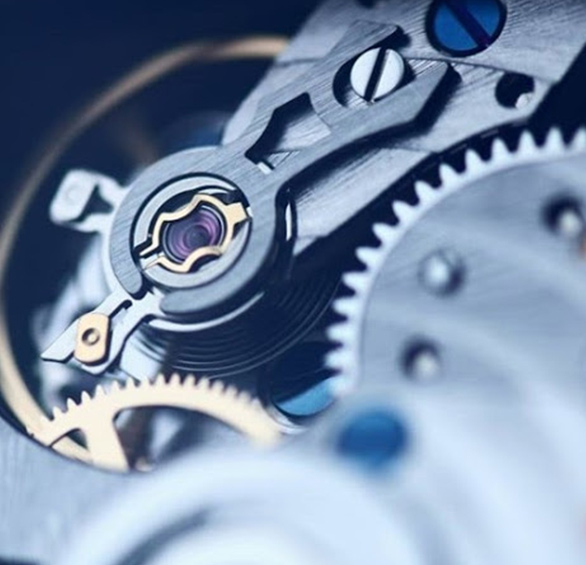
Mainspring
What is a mainspring?
Instead of a cell battery, the mainspring is the power source in both automatic and manual mechanical watches.
What does a mainspring do?
The kinetic energy stored in the tightly wound mainspring is transferred to the other parts of the mechanism as it slowly unwinds.
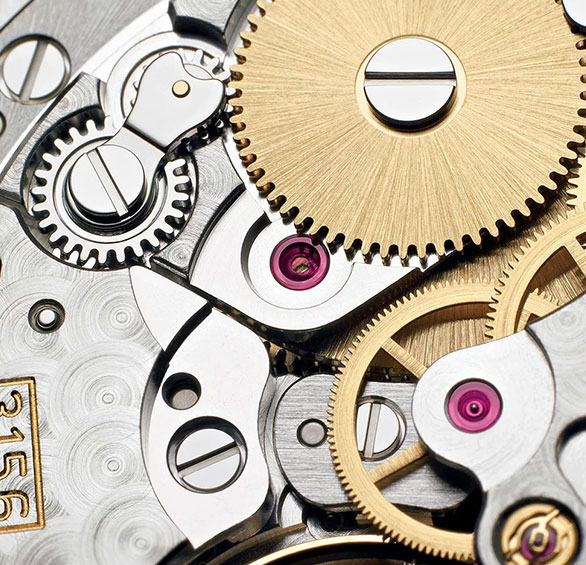
Gear Chain
What is a Gear Chain?
A series of interlocking discs rotating in sync, which connect the mainspring to the other parts of the watch.
What does a Gear Chain do?
Like arteries in the human body, the gear chain passes the energy from the mainspring through the mechanism to the different elements that require it.
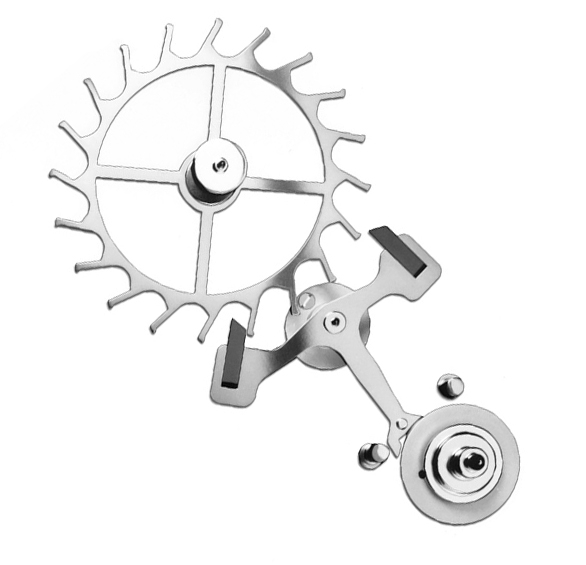
Escapement
What is an Escapement?
The escapement consists of two main elements - a disc with regular notches around its edge, and separate ‘T’-shaped piece with two teeth that fit into these notches as it rotates.
What does an Escapement do?
The escapement receives the constant energy from the mainspring (via the gear chain), and with the notches around its edge, regulates it into equal intervals. The escapement is what can be heard ‘ticking’ when you listen closely to a mechanical watch.
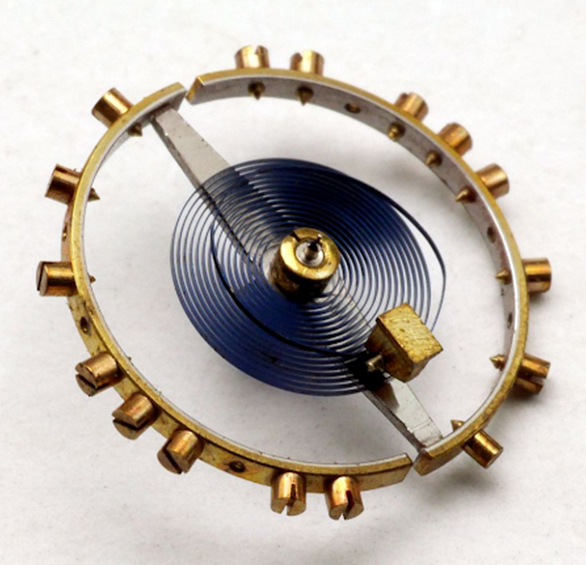
Balance Wheel
What is a Balance Wheel?
The balance wheel is an even weighted wheel that is allowed to swing back and forth, with a central hairspring returning to its centred position each time.
What does a Balance Wheel do?
The balance wheel receives the energy from the escapement, and oscillates back and forth at a constant rate (between 5 and 10 times a second). A watchmaker can fine tune the oscillation of the balance wheel to make it run faster or slower, to ensure it keeps accurate time.
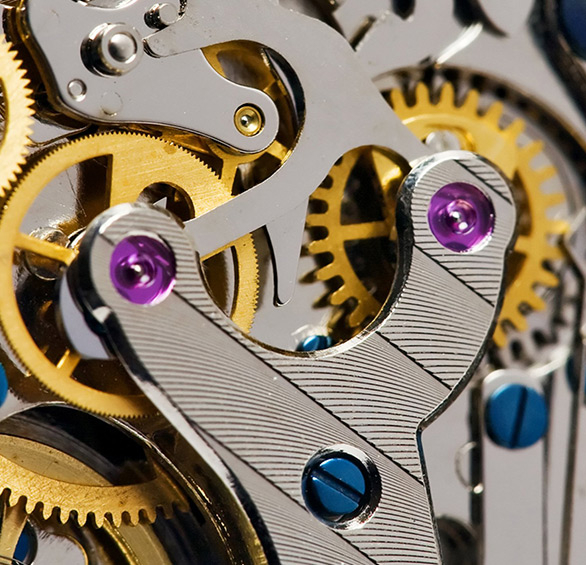
Dial train & Jewels
What is a Dial Train?
The chain of gears attached to the second, minute and hour hands of the watch.
What does a Dial Train do?
The dial train receives the consistent movement from the balance wheel, and translates it to advance the hands around the watch, to keep the correct time that is set by the wearer.
What is a watch Jewel?
Often, synthetic rubies are used to reduce metal-to-metal abrasion at points of high friction. Rubies are an ideal material for this, as they absorb heat and are extremely durable and hard-wearing.
What do watch Jewels do?
At points of high friction, such as in the centre of a gear wheel which is under constant motion, a ‘jewel’ is used to reduce wear and improve accuracy and performance. When you consider how many times the gears will turn over the watches lifetime, these lubricating jewels are an incredibly important part of the watch mechanism!
Automatic vs Manual vs Quartz Watch Movements
Automatic Watches
What Are Automatic Watches?
The automatic movement, or self-winding watch is the younger brother of the traditional hand-wound watch, first being marketed at the beginning of the 1900s as an alternative to hand-winding every day.
How Do Automatic Watches Work?
Instead of having to manually wind the watch every day, an automatic movement utilises the natural movement of the wearer’s wrist to swing a rotor inside, which winds the mainspring over time.
Pros:
- No winding, just wear and go
- Much larger selection on the market than manual
- No battery swapping
Cons:
- Needs to be worn regularly to keep time
- Causes watches to be heavier and often thicker due to the rotor
- Can obstruct the view of gears in a transparent watch case
Accuracy:
Typically 99.994% accurate, losing +/-5 seconds per day.
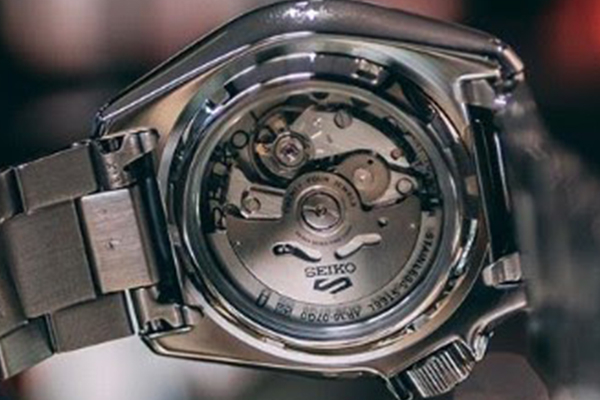
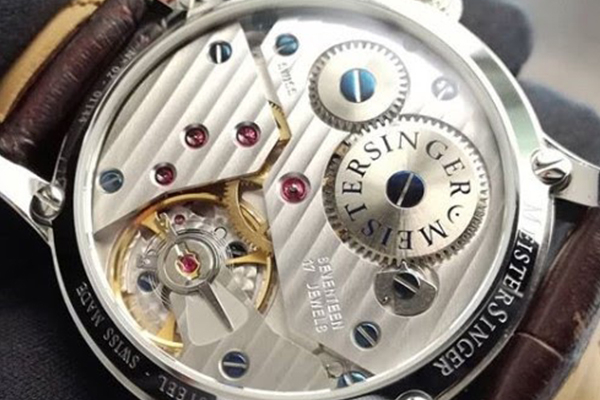
Manual/Hand-wound Watches
What Are Manual/Hand-wound Watches?
A manual watch, sometimes called a winding watch or hand-wound watch is a watch movement that uses energy stored in a mainspring which is wound by hand. Dating back to the 16th century, manual watches are the oldest type of watch movement and certainly have the most craftsmanship and intricacy of all other movements.
How Do Manual/Hand-wound Watches Work?
The wearer turns the ‘crown’ a few times each day to keep the mainspring wound. The energy stored inside the mainspring provides a manual watch with its power which is subsequently transformed through gear chains, balance wheels and escapements into a ticking watch. The full chain of events that occur to make this mechanism work is described at the beginning of this article.
Pros:
- Aesthetically beautiful with a transparent case
- Collectable - hold their value very well
- Thinner and more lightweight than a mechanical watch
Cons:
- Can be sensitive to the environment
- Not resistant to shocks or drops - easily broken
- Can be overwound and damaged
Accuracy:
Typically 99.994% accurate, losing +/-5 seconds per day when wound.
Quartz Watches
What Are Quartz Watches?
Quartz movement watches are the most popular type of watches on the market, owing to their incredible accuracy and minimal maintenance - a quartz watch battery can last up to two years before needing replacement.
Since their invention in the 1960s, they have revolutionised the watch-making industry, as they can easily be manufactured on a large scale. Quartz movement watches can cost a fraction of the price of hand-crafted mechanical counterparts, making stylish, accurate timepieces much more accessible.
How Do Quartz Watches Work?
Quartz watches contain a small round cell battery that supplies power, rather than a wound mainspring. The power is sent through an integrated circuit to parts of the internal movement, including a tiny piece of quartz. This piece of quartz oscillates at a regular rate when an electrical current is passed through it. This regular pulse of current is then converted by a ‘stepping motor’ into watch hands being moved, or a digital display being updated.
Pros:
- Rugged, not prone to breaking easily
- Lightweight and thin mechanism
- Cheaper and less regular servicing
Cons:
- Little craftsmanship to appreciate
- Battery replacement every 1-2 years
- Don’t hold their value over time
Accuracy:
Typically 99.998% accurate, losing +/-1 second per day.
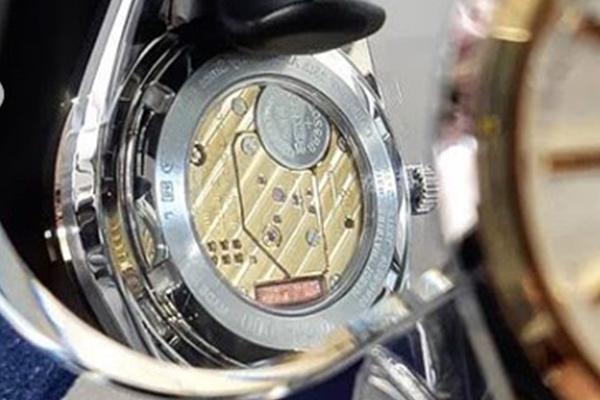
Expert Buying Tip:
To Spot the Difference between quartz and mechanical watches, take a look at how they tick. You will find a mechanical watch ‘sweeps’ with multiple ticks per second and a quartz watch ticks every one second.

Contemporary Watch Movements
Kinetic/automatic quartz movements
Seiko launched their first kinetic energy watches in the late 1980s, harnessing the movement of the wearer’s wrist to replace the need for a cell battery. Unlike the automatic mechanical movement watch, which also uses movement as an energy source, this modern technology still uses a quartz crystal to keep the hands ticking.
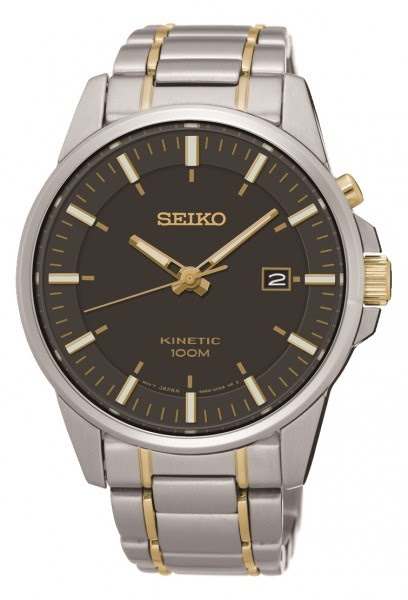
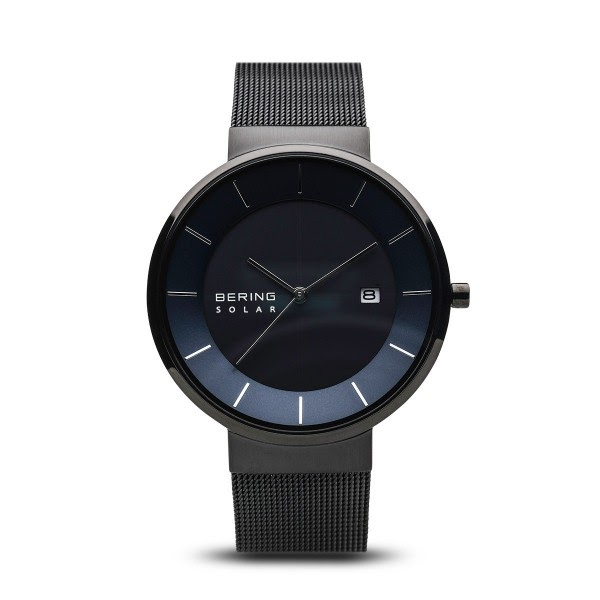
Eco-friendly/rechargeable Movements
With the environment at the forefront of the 21st century, watch manufacturers are constantly developing new innovations in watch technology to provide more sustainable options.
Brands such as Seiko, Casio, Citizen and Bering have all adopted renewable energy technology in their watches, removing the need for disposable cell batteries. These eco mechanisms still use a quartz crystal to keep time, however using a rechargeable battery that can be powered by natural sources such as light or movement provides a more sustainable option.
Get in touch
Get in touch
Contact us by phone at 0141 221 5855 or by email at [email protected]. We love our work and will be happy to help you with your query, we can also book a convenient time for a consultation to find the exactly what you need..
 Back to top
Back to top
 Basket
Basket





 0141 221 5855
0141 221 5855 Send us an email
Send us an email






 Secure payment methods
Secure payment methods


